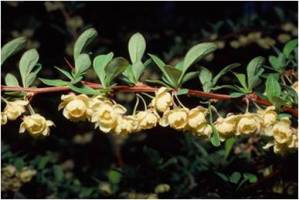 |
Japanese Barberry, Berberis thunbergii
- Multi-branched shrub with elliptical red berries
- Remove plants in the spring by hand
|
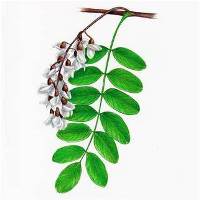 |
Black Locust, Robinia pseudoacacia
- Large deciduous trees with thorns and compound leaves
|
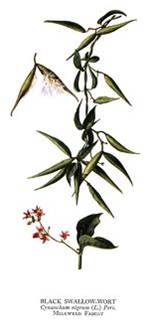 |
Black Swallow-wort, Vincetoxicum nigrium
- Perennial twining vine with opposite, dark green leaves
- Dig up plant, leaving as few roots as possible.
- Begin as plant appears, returning in August to remove before seed pods burst
|
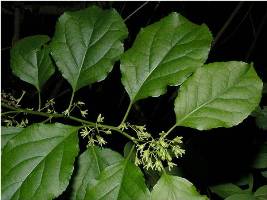 |
Asiatic Bittersweet, Celastrus orbiculatus
- Woody vine with alternate leaves
- Remove as much of plant as possible by pulling up roots and pulling down vines
- All plant parts, including mature fruit, should be bagged and disposed of in a trash
|
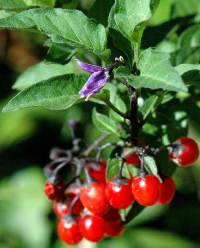 |
Bittersweet nightshade, Solanum dulcamara
- Perennial vine grows to 3 m in length.
- Hollow stems start out green and can turn a dark red to black color.
- Leaves are alternate, ovate, and dark green in color with a purplish tinge.
|
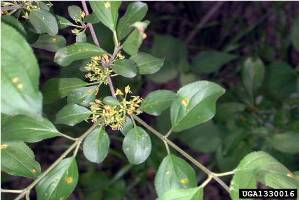 |
Common Buckthorn, Rhamnus cathartica
- Small understory tree with dark green leaves and curving veins
- Sharp point at end of twigs
- Grey bark
- Pull saplings when found
|
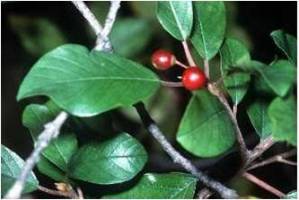 |
Glossy Buckthorn, Rhamnus frangula
- Gray bark with white spots
- Dark green leave with curved veins
- Understory tree
- Pull saplings when found
|
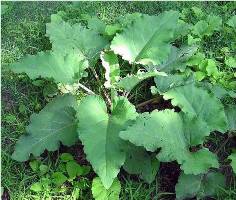 |
Common Burdock, Arctium minus
- Perennial. First year has alternate, large, heart-shaped leaves,
- Second year sends out tall stalk with purple flowers.
|
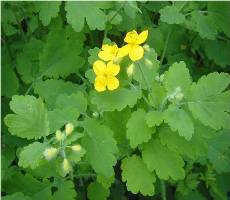 |
Celandine, Chelidonium arvense
- Biennial
- When the branches or leaves are broken a yellowish-orange sap can be seen.
|
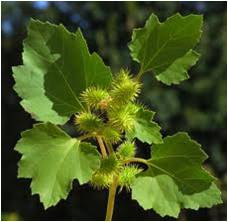 |
Cocklebur, Xanthium strumarium*
- Native to the US but invasive in disturbed areas
- Broad, grape like leaf with toothed edges
- Dig up before flowers appear
|
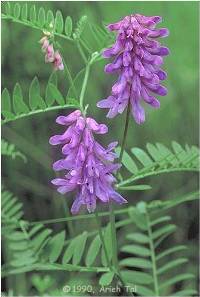 |
Cow vetch, Vicia cracca
- Pea family plant with small compound leaves
- Remove when found
|
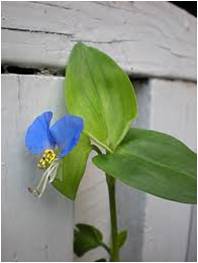 |
Asiatic Dayflower, Commelina communis
- Annual pubesentstems grow distally to 1 m.
- Lanceolateleaves 3-9 cm long
- Bracts growing opposite leaf sites
|
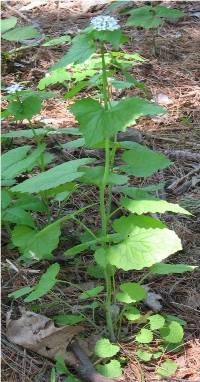 |
Garlic Mustard, Alliaria petiolata
- Biennial
- Heart shaped leaves: 1st year single leaf, 2nd year multi-leaf structure with flowers
- Distinct garlic smell
- Remove by pulling from base of plant
|
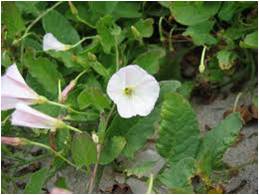 |
Hedge Bindweed, Convolvulus arvensis
- Perennial vine of morning glory family
- Arrowhead-shaped leaf
- Pull up where possible on an annual basis
|
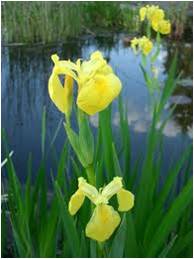 |
Yellow Iris, Iris pseudacorus
- Aquatic yellow iris flowers April to June
- Broad, sword-shaped, erect, leaves
- Dig up completely to remove, or cut down to base annually
- Handle with gloves as plant can cause rash
|
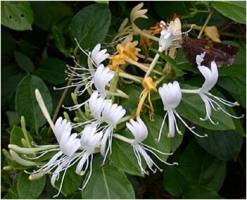 |
Japanese Honeysuckle, Lonicera japonica
- Trailing woody vine
- Use herbicides once per year in mid to late fall
|
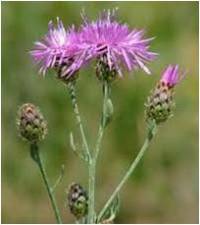 |
Spotted Knapweed, Centaurea maculosa
- Perennial 2 to 4 feet tall, alternate, pale green leaves 1 to 3 inches long
- Leaf margins of lower leaves divided and smooth but surface of the leaf is rough.
- Hand pull twice per growing season
|
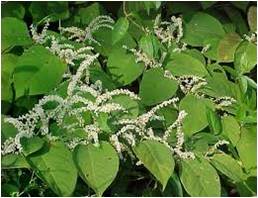 |
Japanese Knotweed, Polygonum cuspidatum
- Dense growing perennial grows to 3 to 10 ft high
- Woody stem is hollow.
- Large, alternate, dark green leaves
- Small white flowers
- To remove, cut three times per year
|
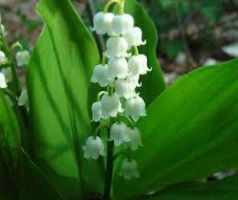 |
European Lily of the Valley, Convallaria majalis
- Perennial herb from a slender rhizome.
- 2 to 3 basal leaves.
- Flowers in cluster on one side.
- Flowers are small, aromatic, white, bell-shaped.
|
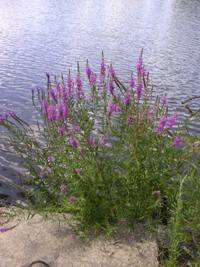 |
Purple Loosestrife, Lythrumsalicaria
- Perennial wetland plant
- Sends up reedy stalks that can grow to 8 ft
- Currently being controlled by Galerucella beetle
|
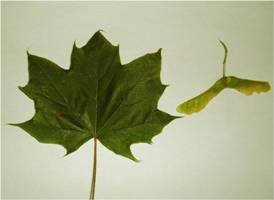 |
Norway Maple, Acer platanoides
- Maple with white sap
- Pull or cut saplings in the spring
|
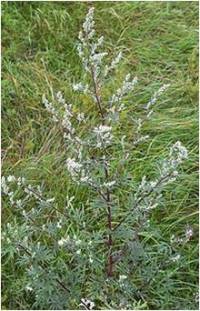 |
Mugwort, Artemisia vulgaris
- Erect, perennial, 1 1/2' -7' tall
- Stems mostly smooth
- Leaves alternate, green above, with dense silvery fuzz below, oval in outline, divided into unequal, usually toothed segments.
- Must be pulled or dug up completely
|
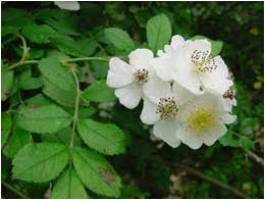 |
Multiflora Rose, Rosa multiflora
- Dense shrub with small leaves
- Cut or mow as close to ground as possible once per year
|
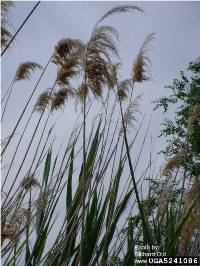 |
Phragmites, Phragmitesaustralis
- Tall (up to 14 ft) golden grass
- Perennial
- Annual cutting, end of July
|
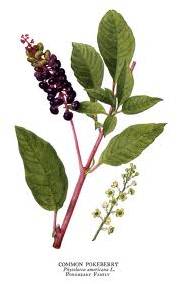 |
Pokeweed, Phytolacca americana
- Native to the US but is invasive in disturbed areas
- Large leaved tall plant with pink stems and pink inflorescences
- Can be removed by hand pulling or digging
- This plant is poisonous
|
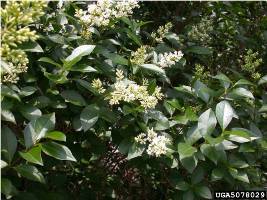 |
Common Privet, Ligustrum vulgare
- Large shrub with ovate leaves
- Cut back plants before berries are produced in September annually
|
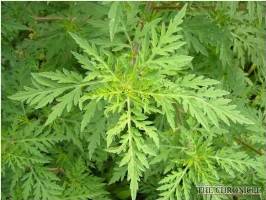 |
Common Ragweed,
Ambrosia artemisiifolia*
- *Native to the US but is invasive in disturbed areas
- Leaves are divided more than once, feathery or fern-like, lower leaves opposite, upper leaves alternate
- Pull or cut in July
|
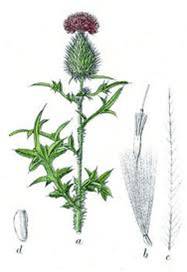 |
Bull Thistle, Cirsium vulgare
- Annual or biannual with tall spiny winged stems
- Rosette in first year 2nd year can reach over 6 ft tall
- Mow or cut annually to prevent seeding
|
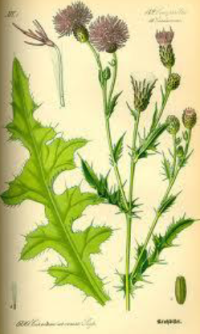 |
Canada Thistle, Cirsium arvense
- Erect perennial thistle, .5 to 1 m tall
- Pull twice per year in the spring
|
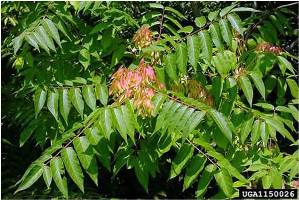 |
Tree of Heaven, Ailanthis altissima
- Cut annually in spring and fall
- Compound leaves, 2 to 3 ft in length
|
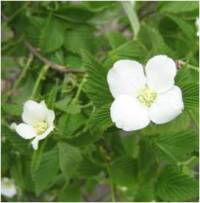 |
White Kerria Jetbead, Rhodotyposscandens
- Small plants; dig up all of plant, including roots. Larger infestations -cut shrubs to the ground in fall or winter
- Leaves are opposite, simple and doubly serrate with a rough leaf surface.
|